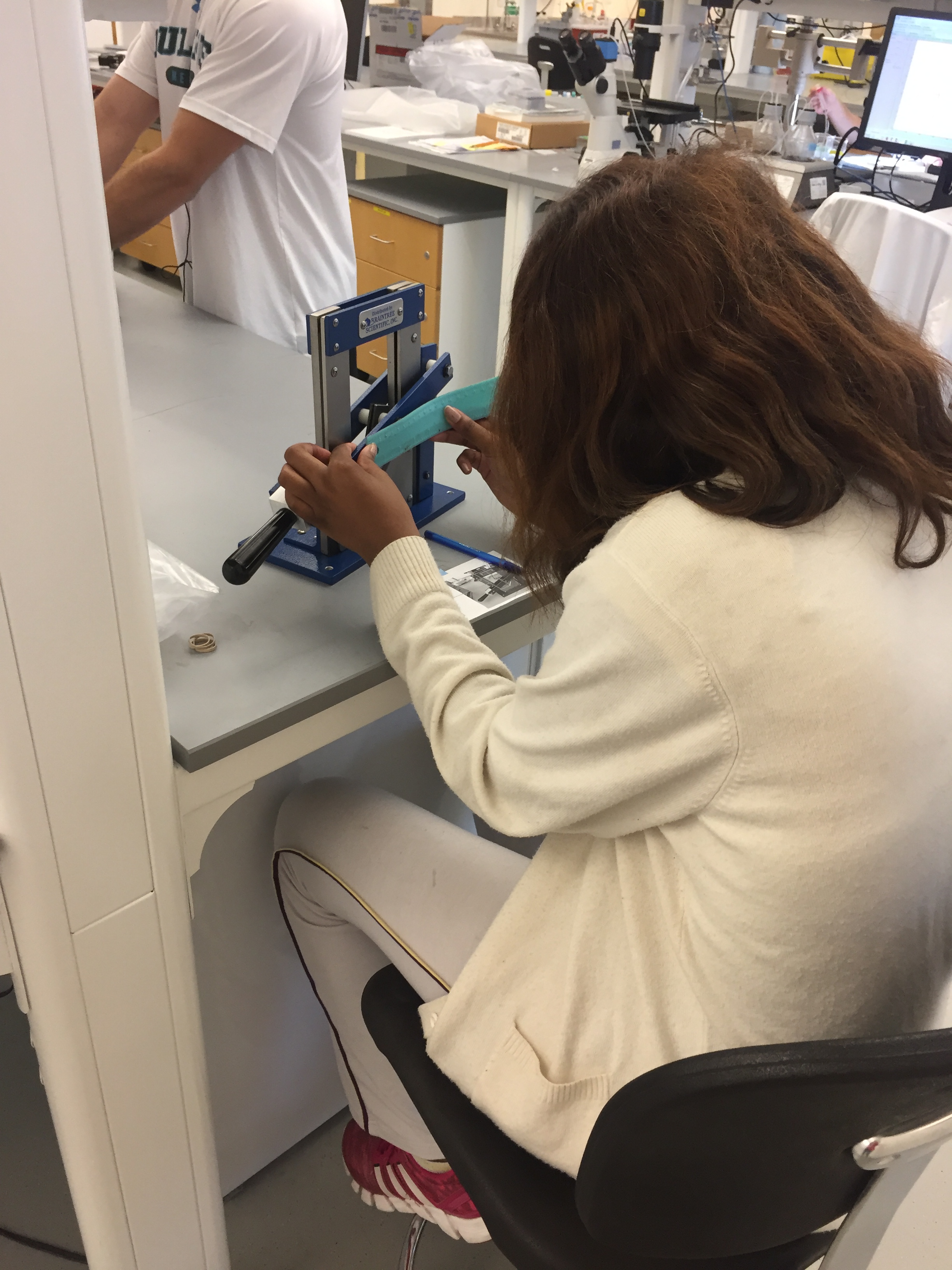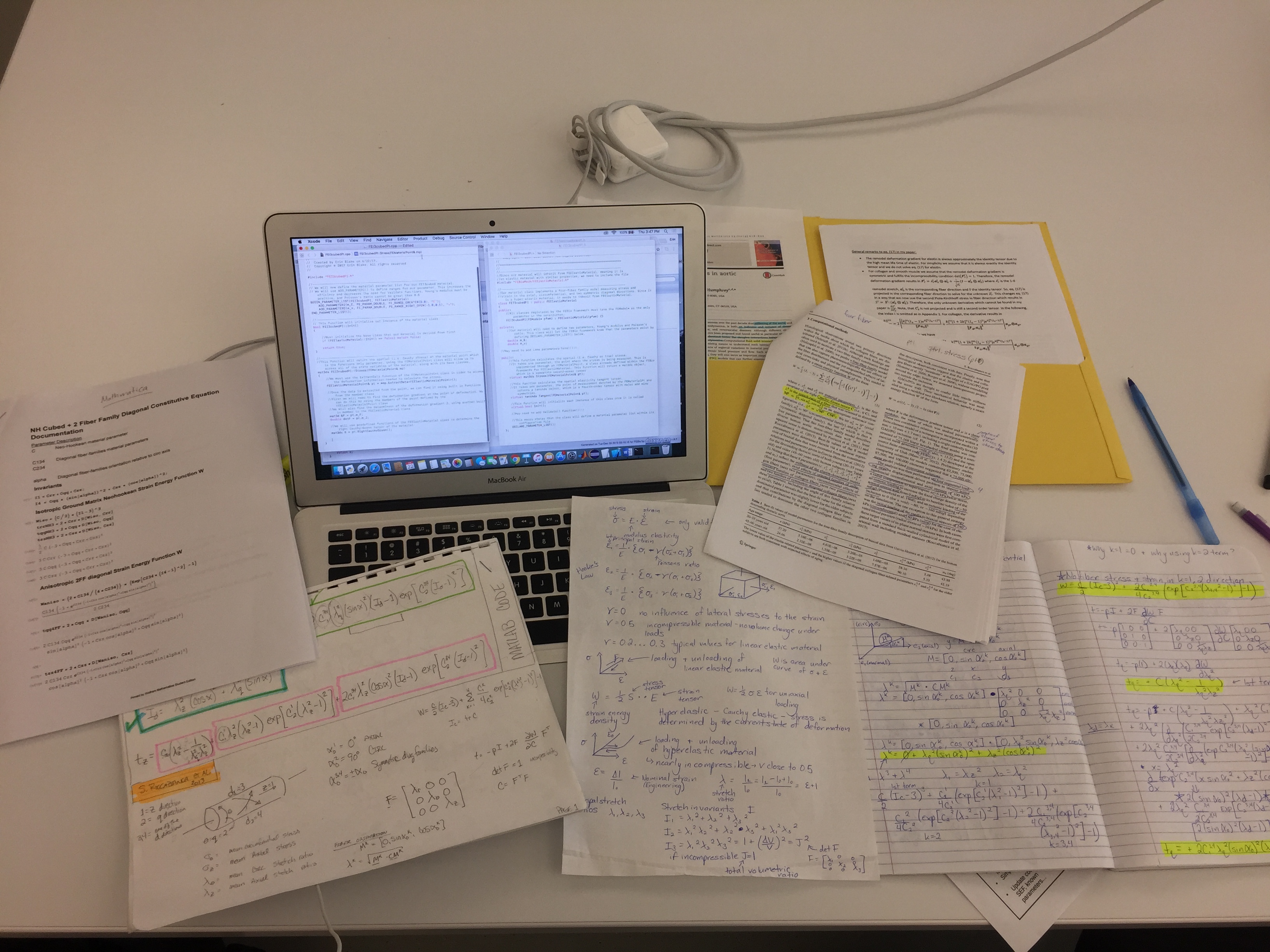I have officially finished my first two weeks working with Dr. Kristin Miller and her team at the Biomechanics of Growth and Remodeling lab! The BG&R Lab dedicates its time to researching the tissue within woman’s reproductive system, specifically what mechanical properties factor into the deterioration of strength in the pelvic wall. There are multiple projects within this area of study, specifically two focusing on Pelvic Organ Prolapse (POP) and Pre-term Birth. There are also projects that focus on tendons in the leg and aortic dissection, which is a tear in the inner lining of the heart that leads to blood leakage. Basically, what the BG&R lab all boils down to is the study of how the extra-cellular matrix (ECM) of tissue reacts to stress and strain.

Walking into the lab on the first day, I wasn’t sure what to expect. I worked in the lab a bit this past semester, but I knew the direction of my responsibilities were more than likely to change come summer. I thought that I would probably be another lab hand, helping with some experiments, making solutions, and reading papers. I was more than surprised when I was told by my supervisor Cassie, a PhD student in Biomedical Engineering at Tulane, that I would be working on my own project! I have now undertaken the task of writing the code for a new plug-in being used to model the tissue we use in our experiments.
That probably sounds like jibberish to most people, and it did to me too at first. I soon learned that the software we use to model our experimental data is called FEBio and is used for Finite Element Analysis. Finite element analysis (FEA) is a computerized method for predicting how a product reacts to real-world forces, vibration, heat, fluid flow, and other physical effects. (1) This type of analysis allows us to measure how the tissue we work with should react to different stress and strain values placed on it, and whether it will break, bend, stretch and hold its authenticity, or whether it will lose its strength. As a computer science major, I have experience with many different programming languages, including C++ which FEBio is programmed in. I was surprised to find out that I was the only one in the lab with exposure to this language, and that they needed me to decipher their problem of creating a “plug in.” What a plug in does is allow us to model our tissue in FEBio using the parameters that we know through our experimentation affect our material. This comes in the form of an 8-page constitutive model, which is basically just a long and complex equation that models how the tissue behaves. (It’s as scary as you’re thinking it is, don’t worry I’ve included a picture of the first page below). So I was given the project to take this model, take what we know about FEBio, and figure out a way to write this plug in. Once we have a running plug in, we can then use this in our models by selecting on this plug in as our “Material” in the list of parameters, that way when we apply the different values of stress and strain we will be able to see what should happen to the tissue.

I was extremely excited to learn that I would be undertaking this project, and that everyone was looking forward to seeing what I could come up with. It definitely puts a lot of pressure on me, but it also makes me feel like I am an integral part of the lab, and a true member of the team. To me, this all seems like a big puzzle, but much more complicated because I don’t have all the pieces, so I have to find them. It’s also nice to be able to help others in the lab understand coding and C++, and makes me feel my studying and skills are really paying off. Now I know this may sound extremely boring to some people, and trust me at times it is. I have also had the chance to see other aspects of the lab, such as touring the surgery rooms and observing how the rats are dissected and their tissue is prepared for loading in our biaxial testing machine (Pictured below). I am very excited for the rest of the summer, and to see what I am capable of accomplishing in terms of determining how to write this plug in. I am also anticipating getting to do some hands on work, such as dissections and tissue testing.
I love the possibilities this internship provides, and am glad that I will get to continue this into the school year. In the Biomedical Engineering curriculum, there is a required course called “Research and Professional Practice,” which basically just means working in a lab underneath a professor and taking on your own project within their lab. It is incredible that I have gotten the opportunity to start building a relationship with the members of this lab, and that I will get to continue my project through my junior and senior year in the same lab. I was fortunate that all of the professors in the BME department are very receptive to undergraduate students joining their labs, so this internship opportunity was not too difficult to find. If you are looking for an internship in research, there are so many opportunities at Tulane that you can take advantage of. Just reaching out to a professor you may enjoy learning from, and doing your own investigating into what they study is the first step in this process. I can promise from experience that it pays off, and hopefully it will lead to an incredible opportunity to grow both academically and professionally.
(1) https://www.autodesk.com/solutions/finite-element-analysis
